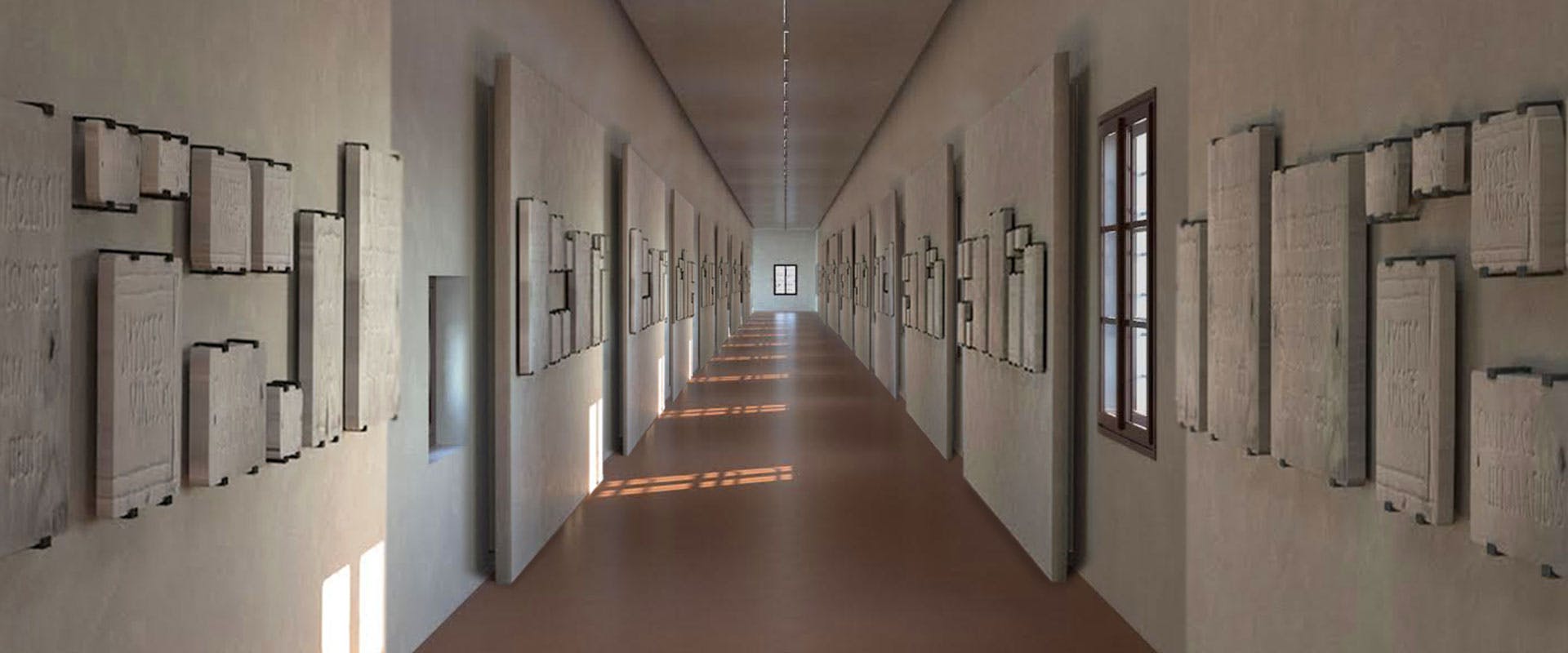Uffizi, 1 million dollars to set up the Vasari Corridor
Generous donation by the Edwin L. Wiegand Foundation
One million dollars to set up the new Vasari Corridor, on which refurbishment work is currently underway. The sum was donated by the Edwin L. Wiegand Foundation of Reno, Nevada, represented by Raymond Avansino, Chair and Chief Executive Officer, and Marisa Avansino, Co-Vice Chair and President. The agreement was signed in the Vasari Auditorium of the Uffizi Galleries. “My heartfelt thanks to Raymond and Marisa Avansino and the Edwin L. Wiegand Foundation. Their generous donation will be used to complete the restoration of the Vasari Corridor”, explained the Director Eike Schmidt. “In particular, it will be used to create the displays that will transform it into a true walk down memory lane, from the Roman epigraphs and marble portraits of Classical Antiquity, to the detached 16th-century frescoes, from the commemorative space of the Night of the Bridges (4 August 1944), to the space dedicated to the Georgofili Massacre (27 May 1993). These attacks deeply wounded the Vasari Corridor, along with the entire city of Florence. We also owe our commitment to the victims of 1993 to keep the works going, so that the inauguration of the restoration will take place on the next anniversary of the Georgofili massacre”.
THE NEW LAYOUT
Due to the prohibition by the Fire Brigade to introduce flammable material, no paintings will be exhibited in the 'new' Vasari Corridor. Instead, the Uffizi's formidable collection of ancient Greek and Roman marble epigraphs, which until now had remained in storage, will finally be brought back to light. This collection includes almost three hundred marble inscriptions, Greek and Latin, which formed the core of the Grand Ducal Epigraphic Museum founded between the 17th and 18th centuries, with a few additions from the early 19th century. This recreates an epigraphic collection that has been widely renowned in scientific literature and by travellers since the 18th century. It is one of the oldest collections exhibited in an Italian public museum. The epigraphs remained on display at the Uffizi for nearly three centuries, until 1919, when the collection was dismantled and then put into storage. Its reconstruction in the Corridor just above Ponte Vecchio will be supplemented with didactic aids in line with today's accessibility criteria. Thanks to the addition of Hellenistic and Roman sculptures, just as in the 'original' by Vasari, the Corridor will become, to a large extent, a new and exciting archaeological route. And that’s not all: it will also include the 16th-century frescoes (detached and put into storage in the 19th century) that used to decorate the outside of the passageway in the section overlooking the Boboli Gardens.
During the last century, this unique architectural structure has been affected by two dramatic events in the history of Florence. Firstly, on 4 August 1944, during the Second World War, the Nazi troops destroyed the buildings on both banks of the Arno at the ends of Ponte Vecchio, causing the collapse of a part of the Corridor. Secondly, the Mafia explosion on 29 May 1993 caused the death of five citizens and serious damage to the Uffizi Gallery and its heritage. For these reasons, two sectors of the Corridor - in correspondence with the places devastated by those tragic episodes - will be destined to house memorials bearing witness to these tragedies and serving as a warning for the future.
But there’s more: the interior of the Corridor will also house the 16th-century frescoes (detached and put into storage in the 19th century) that once decorated the outside of the passageway in the section overlooking the Boboli Gardens, together with a selection of Hellenistic and Roman sculptures, just as it used to be in the 'original’ by Vasari.
THE REFURBISHMENT WORK
As it turned out after the start of the refurbishment work, the necessary interventions had to achieve four goals: improving structural safety through a consolidation work on the masonry structures; adapting the building to fire prevention regulations through a set-up without combustible materials, reopening and retrofitting pre-existing vertical connections and constructing new emergency routes within the historic structures; making the Corridor universally accessible through flattened floor routes and the construction of lifts; adapting the systems and energy containment through the construction of mechanical air-conditioning systems and the use of geothermal energy.
The progress and timing of the operations, which started in the midst of the pandemic at the end of 2021, were affected by the discovery of a structural damage that required a major consolidation work, including the insertion of numerous chains, particularly in the areas damaged due to the explosions of 1944 and 1993. Nevertheless, something positive happened during the works, as were uncovered portions of the original Vasari floor and other 16th-century elements of the Vasari Corridor, such as large portions of the original terracotta, ancient plaster, and parts of stone masonry. These architectural findings, whose historical importance has been confirmed by archive data, made it necessary to plan and approve a variant of the project in order to preserve and leave visible these original elements.
The work has now reached a point where it will soon be possible to put on display the pieces in the various sections of the Vasari Corridor.
VASARI CORRIDOR: FROM CLOSURE TO ONGOING WORK FOR REOPENING
2016: closure to the public by the Fire Brigade Command for safety reasons (no emergency exits and disabled accessibility)
2019: presentation of the adaptation and refurbishment project with a view to reopening to the general public
2020: launch of the public tender for the project with an approximate value of 10 million euros
End of 2021: start of refurbishment work.
